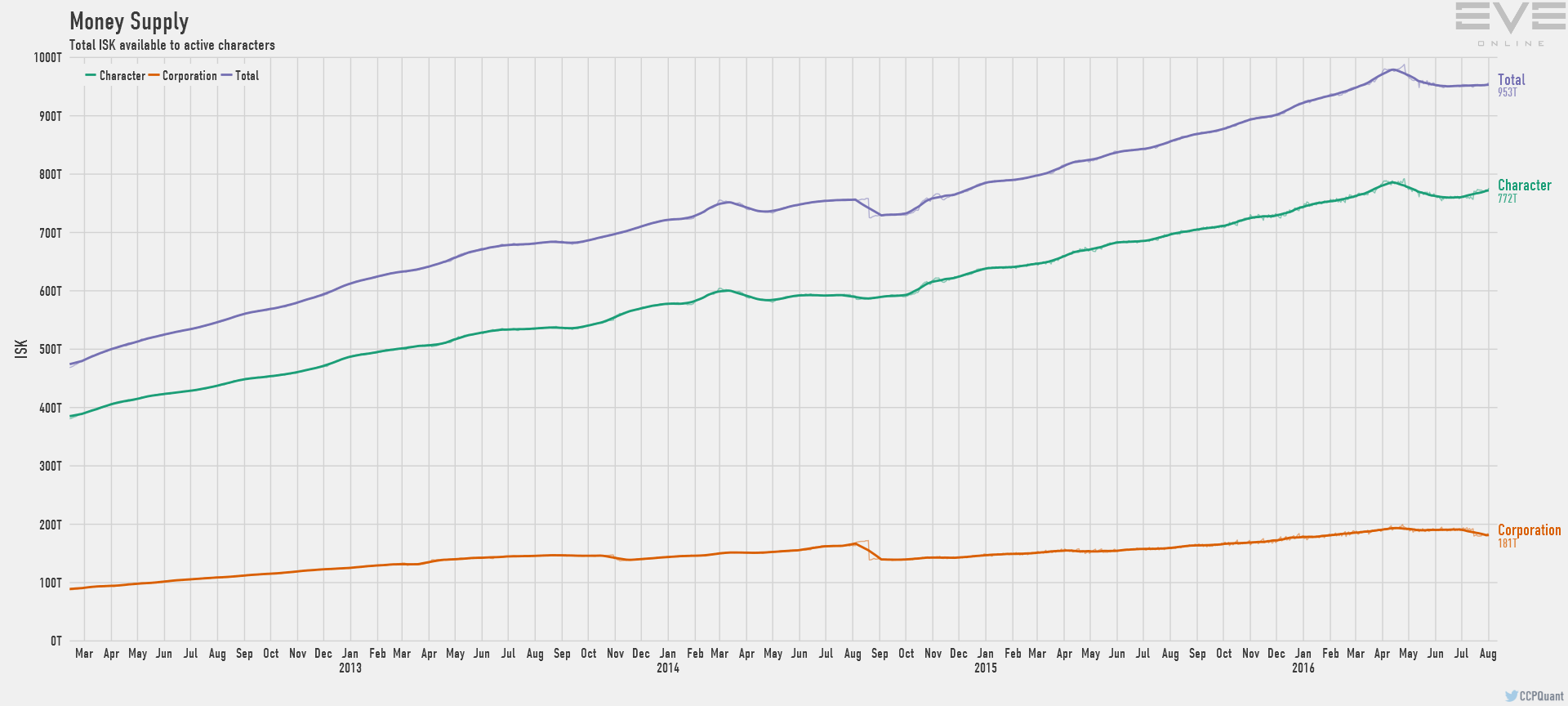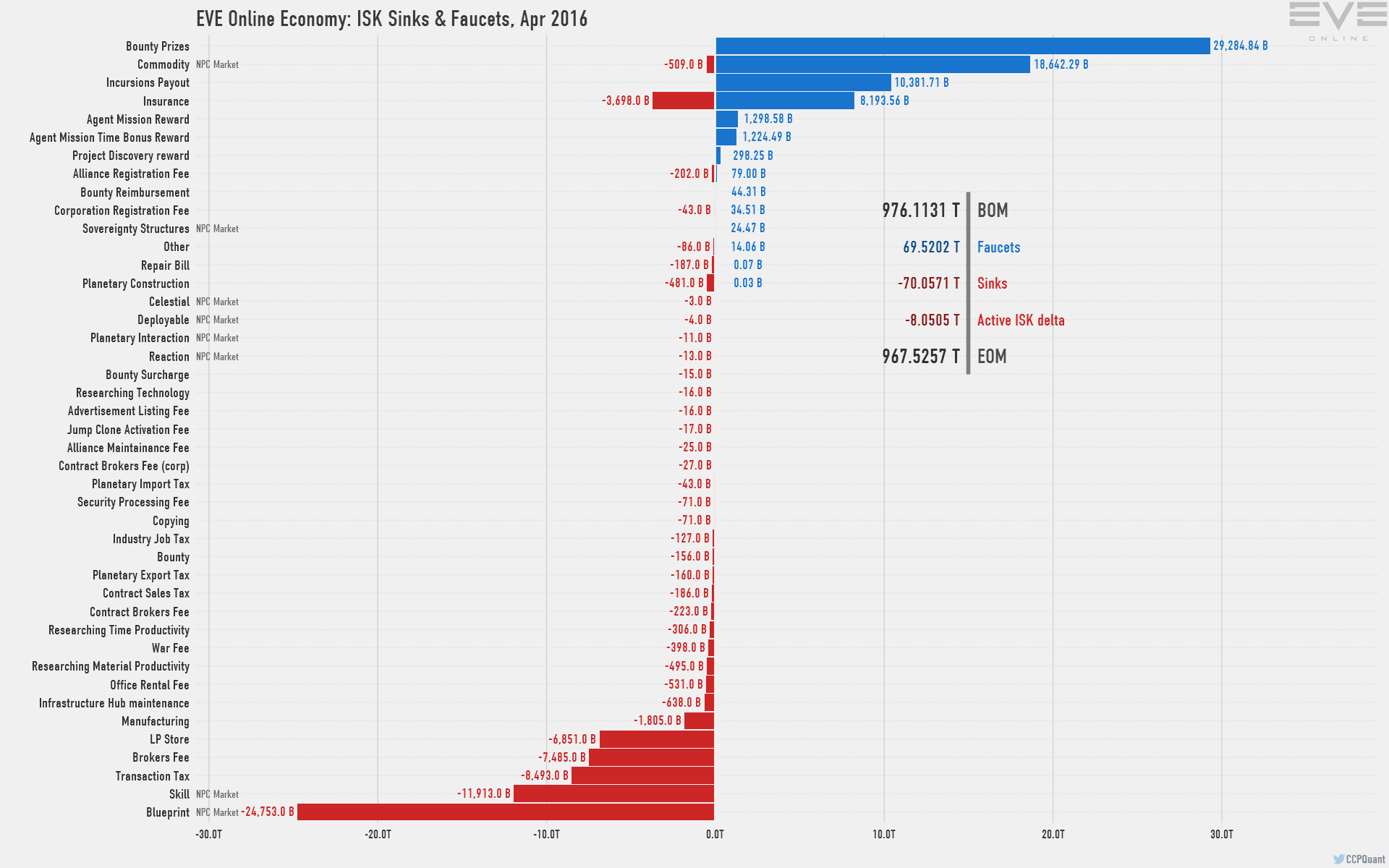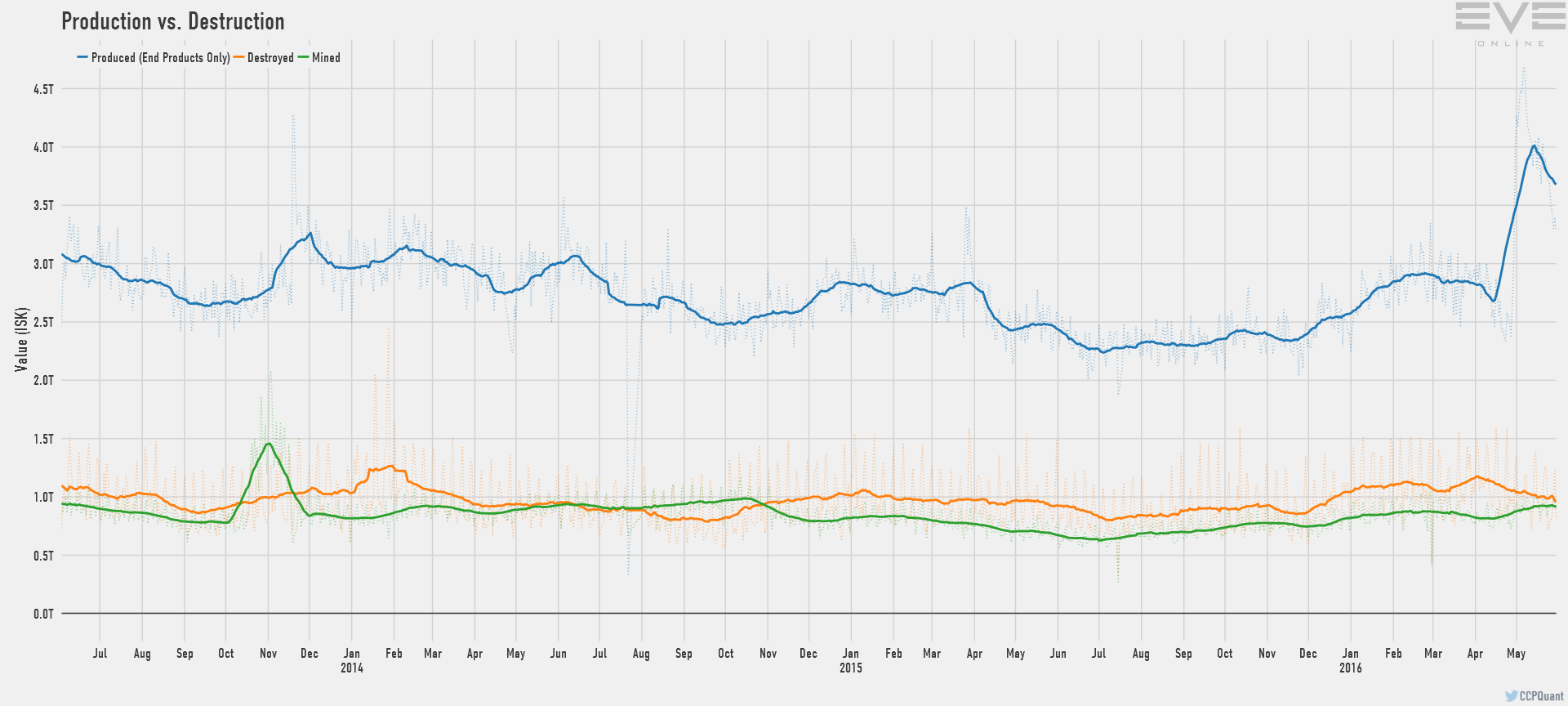What would Spreadsheets and Spaceships (EVE Online) be without metrics. Every play style tracks them. Pirates track their ISK efficiency and battleclinic rank, PVE carebears watch their ISK/hour, miners track their ore yields. Industry is no different, but there are a LOT of different metrics, both normal and unique. I will try to boil down the scary :math: to keep it simple. Been working on this one a little bit at a time for a couple weeks now. Prepare for wall of text!
The Traditional Metrics
A lot of these are metrics used by everyone in EVE. They're a good starting point but, as I will explain, they are some of the weaker metrics available for industrialists. BOLD titles are for calculated metrics covered here, UNDERLINE is for other metrics like Cost or Sale Price. I will try to boil down the scary :math: to keep it simple. Prepare for wall of text!
%Profit
By far the most popular metric. I like to refer to this also as ISK Efficiency. High margin products provide big bang for the buck, but the most outrageous figures usually have a lot of asterisks attached. Usually, a high percentage margin has significant limits on it. The primary pitfalls of these products are Market Volume and Kit Cost. Put another way, either it will be very tough to sell large volumes or the buy-in is so trivial that 3x returns are still small potatoes.
There are two camps for calculating profits. First is the simple calculation (profit/cost), and the other is closer to %difference pictured below:
I like to use %Profit as an initial filter when finding products worth producing. After filtering by %Profit I tend to ignore the figure all together. I also find %Profit a more useful metric in T2 ship production, since there are a lot of limiting factors to consider. This metric can be extremely useful to the beginning industrialist because the first hurdle in successful industry is ISK. For the established industrialist, %Profit becomes a secondary metric as trends like ISK/Hour become a priority.
Revenue
This metric is much closer to my heart. In a galaxy of spacerich tycoons, revenue is king. Also, this is an excellent metric for group efforts, since the final returns are the goal. Revenue ties much more directly to ISK/Hour. Unfortunately there are a pair of pitfalls. First, like %Profit it only takes the production side of the equation into account, so some of the highest margins will be distorted by products with very low volume. Second, it becomes easy to let the bills run away from you chasing this metric. Though the return might be 500M ISK profit, the cost to generate that isk may be 1.5B or more.
I define Revenue as (Sale Price - Cost) * Throughput where Throughput = Products Per Cycle. Since it's tied to Products Per Cycle, it's easy to convert to ISK/Hour, just by figuring out the time required to produce the products in question. Also, I really like this metric because in my operation I am limited far more by time than by ISK, so I can afford to commit extra ISK for pocketing more isk in the end.
Helpful Chart:
Though this isn't the very best example, it illustrates why I prefer Revenue over %Profit. Though Shield Extenders have nearly 3x the %Profit, the revenue after 1 week of work is 60% less.
ISK/Hour
The metric to rule them all, ISK/Hour is the be-all end-all metric for nearly every activity in EVE. Industry is no different. Unfortunately, camps tend to be divided on how exactly to measure this when pertaining to industry. The reason is industry has 4 sources of "time utilized", all of which can be completely parallel:
- Research Slots
- Manufacturing Slots
- Logistics and Trade
- Keyboard Time
Personally, I like to boil down to track only Manufacturing ISK/Hour, since with T2 the utilization on research is <50% and the other metrics are much softer to track. I don't keep a stopwatch to track my /played time and audit versus that effort, though I probably should.
This is why I started using Throughput as a metric. By analyzing each product and the reasonable maximum I could produce in one cycle of work, I had a means to standardize products to be able to compare them side by side. Using Throughput, I can easily say "1 week of industry earns this much profit" and therefore keep an eye on ISK/Hour through a top-level metric. Also, by optimizing against bottleneck (manufacturing for T2 modules, invention/copying for T2 ships), it's easy to get fancier with ISK/Hour metrics using API data straight from the IndustryJobs sheets.
Throughput
This is my other key metric that helps me track what to produce. I define Throughput as the reasonable maximum of any single product that can be built in a single production cycle by a single character. The key word here is reasonable maximum. Many products do not fit into human schedules. Therefore it takes some effort to figure out how to round up or down to fit into a play schedule. It's completely unreasonable to expect to have 100% manufacturing utilization unless you're unemployed. If instead you boil down the work to what you know you can complete, you can get Throughput on any product.
I like Throughput for a lot of reasons. First, it makes the :math: for ISK/Hour and Revenue way easier to track. Second, for T2 manufacturing, it gives an estimate for how much work is required on the invention step. Third, it gives a general "how often will I have to manage this" estimate at-a-glance. Combining all these together, it becomes the keystone metric for most of my industrial decisions.
The major downside is it's not a metric tracked in any database. I populated my Throughput numbers by painstakingly checking against EVEHQ's Prism tool. It can be calculated if you do some case-fu to pick rounding points and do the math more dynamically, but I haven't yet. Also, it's custom crafted against my personal playstyle, your mileage may vary. My advice is to center your calculations around how many you can produce each day, then extend that estimate out to whatever your cycle time might be.
Kit Costs
So, you've found a product that should make you a ton of ISK. What good is that if you don't have the up-front capital required to build it? The oft forgotten metric of Kit Costs can really bring an industrial plan crashing down if not handled correctly. The calculation is incredibly simple:
Kit Cost = Throughput * Build Cost
Handled correctly in combination with the other primary metrics, Kit Costs can be used to effectively map out a growth strategy or even just keep projects reigned in to solidify returns. Profits can change daily, but once you buy your materials, Kit Cost is locked in.
Hybrid Metrics
Single-factor-optimization is a mistake when attempting to maximize industrial returns. By only chasing one metric, you will become blind to other factors that will affect your final results. Primarily, by only analyzing production-side metrics, you will miss out on the realities of turning products into cash.
Multi-factor-optimization can look difficult, and can be tough to program against, but is not actually that tough. If you're using spreadsheets though, you will want to make some "hybrid metrics" that combine separate data into one cell so you have a few metrics in one view to work against. These methods are shortcuts for multi-factor-optimization, to help you better drive with your guts.
%Throughput
%Throughput = Throughput/Daily Sales Volume * 100
This is my #1 metric for my personal project. %Throughput represents a "how fast can I sell it" metric. By using the weekly-maximum from Throughput it is possible to gleam a few different things about that particular product:
- How many people are participating in the market
- How popular that product actually is
- How fast should I be able to sell what I produce
Therefore, when I am picking my products, I will maximize Revenue and minimize %Throughput. The thinking being "most isk for the least effort". Also, %Throughput will make glaringly obvious which products are completely dead ends.
I understand that people would want to just use Daily Sales Volume as the tracking metric and save the :math: but volume alone tells you nothing about the realities of that market. Without combining with your weekly output, you have no reference frame as to what that Daily Sales Volume number actually means. Also, I optimize against the weekly Throughput rather than any shorter time scale because that's the rate at which I need the ISK. Again, feel free to tune as your case demands.
Revenue vs Kit-Cost
Though I don't have a one-number equation for this, it's the other half of how I pick products. It's not enough to pick THE BEST
%Profit or even optimize only by
%Throughput v. Revenue. For those of us without a Technetium moon, there still is a maximum industrial budget. By using
Revenue v. Kit Cost, you can stack together multiple contributing characters against the ISK you have on-hand to invest. This was the impetus to make my
Industrial Accounting Spreadsheet. By using this optimization, you should be able to reign in costs to actually extract money out of your program by setting a ceiling and sticking to a
Kit Cost plan.
EVE-Fail tracks his work in a couple of different ways, and I'd like to review them and when/why you might want to use them. First is
ISK/Effort, which is a incredibly boiled down metric for
ISK/Hour. By only tracking real game time spent on industry, rather than the idle time jobs are running,
ISK/Effort really nails down the real
ISK/Hour like any mission runner or miner. But, it's a soft metric that requires more tracking of time than I feel comfortable knowing, and can't be tracked automatically by a computer.
I think it's an excellent way of thinking about the game time invested, and a great metric to optimize if you're willing to keep logs to manage it. I'm desperately afraid of my numbers though.
ISK/Slot
Optimization centers around bottlenecks. If you are cashpoor, then
%Profit is king; if you are doing T2 modules,
Revenue is where I look; if you are doing capitals,
EVE-Fail uses
ISK/Slot.
Each capital takes several slots over several days to build. If you have a well running operation, you will have several copies of each capital component BPO and center the work around how many ships you can produce per 10-12d cycle. By defining each ship in terms of Manufacturing Slots Required, you can easily pick-and-choose which products will best utilize the time required. I wouldn't suggest this to those just starting in capitals, but for those that are established, I can see why this would be a valuable metric.
TL;DR
There are a myriad of ways to pick the "best way to industry". Above are all the ones I use. Feel free to comment with your own.
The big take away here I'd like to underline is the power of multi-factor-optimization. We already do it instinctively, but tend to forget it when spreadsheets get involved. By using the hybrid metrics above, I hope to help at least someone to step up their industry game and really start raking in that carebear ISK.























.png)
.png)


